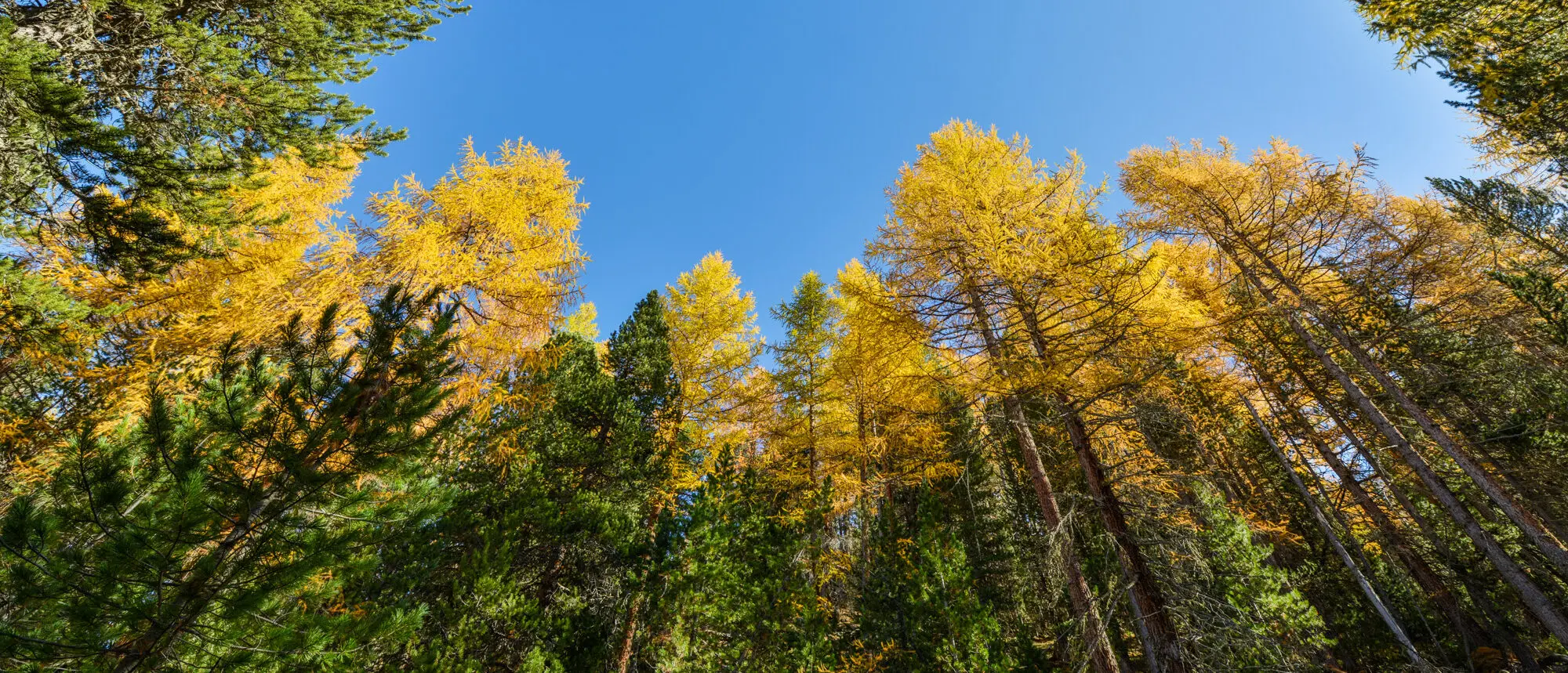In the Engadine, the autumnal golden-yellow colouring of the larch forests is a wonderful sight.
Of all the conifers growing in the region, the larch in its different stages is the most noticeable: its tender green needles appear in spring, turn golden-yellow in autumn, and are shed in November. Undemanding, larches will grow on almost any soil, but they require a lot of light for germination. They grow best in less dense forests and in open areas.
At the end of May / beginning of June new needles appear. Shortly afterwards, the red female flowers open.
Known in German as “Wolfsflechte” (wolf’s lichen), this lichen is often seen on larch trees. In former times, this highly toxic lichen species was added to wolf bait to poison these undesirable predators.
Larches are common throughout the National Park, up to 2200m. Together with cembra pines and mountain pines they grow to the tree line. This tree does not like fog and a humid atmosphere, which is why it flourishes in the dry climate of the Engadine.
The bark of ancient trees like this one can be as much as 30cm thick, affording excellent protection against lightning and damage by wildlife.

About once in 9 years the larch is attacked by a caterpillar. At this time the tree tops already turn brown in summer.
Larch and meadow forests are a typical feature of the Engadine. In former times, these would have been cembra pine and larch forests, but the cembra pines were cleared by farmers to provide grazing land, with only the larches remaining.




